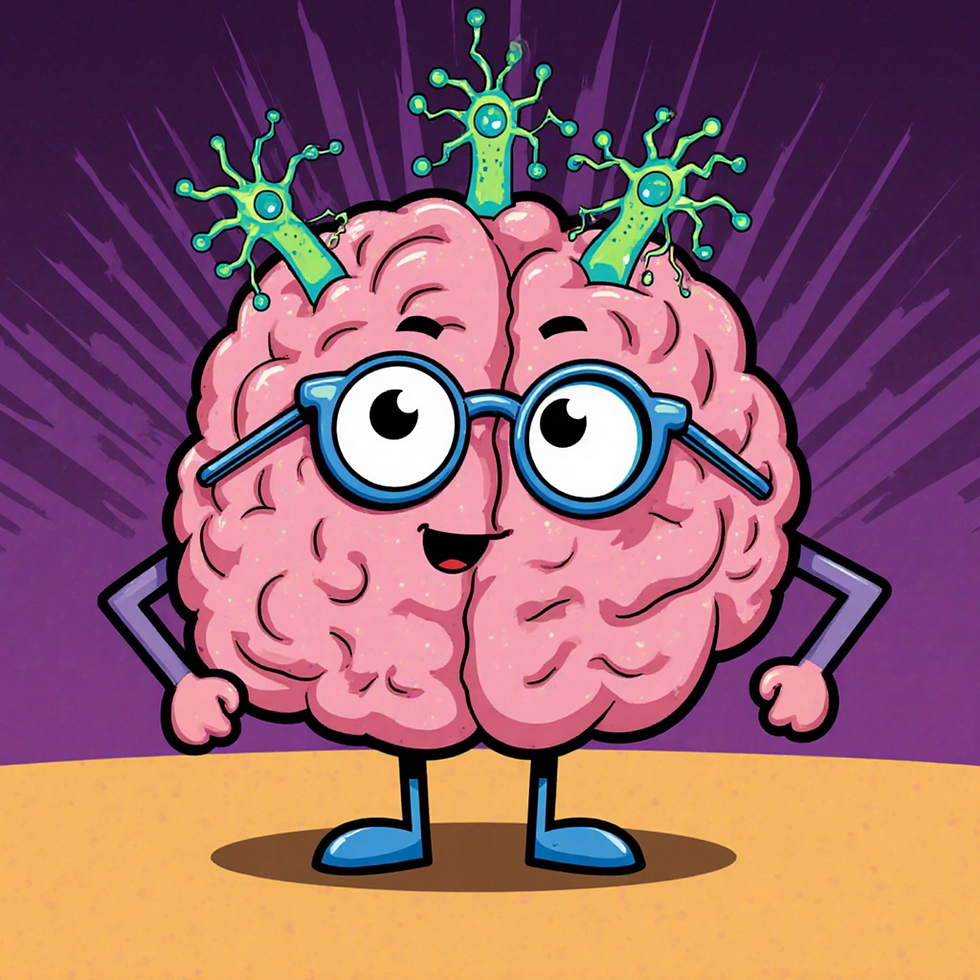What’s the difference between AI and AI?
- Frobo

- Aug 29
- 4 min read
You’ve probably heard people talking about AI all the time. Maybe your teacher, your parents, or even your favorite YouTuber has said things like: “AI can write stories!” or “AI makes pictures!” That’s true—but here’s the thing: that’s only a teeny-tiny part of what AI can do. Read on to find out more!

AI #1: The popular “GenAI” 🌟
This is the kind of AI that people are usually buzzing about on YouTube, TikTok, or in the news. Not everyone, but a lot!
Generative AI (GenAI for short) is like a super-creative helper that’s really good at making new things, such as:
✍️ Writing poems, stories, or even code
🎨 Creating pictures, videos, or music
💬 Chatting with you like a smart buddy
Think of GenAI as an ultra-speedy assistant who has read a mountain of books and looked at millions of pictures. Now, when you ask it for something, it can whip up something brand-new—just for you.
But where does it learn all this? 📚
GenAI needs to practice a lot before it can “make stuff.”
To practice, it looks at examples—tons of writing, art, code, and more. These examples come from the internet: books, articles, images, websites, and sometimes from people who share their work on purpose.
Here’s where the ethics (that’s a fancy word for what’s right and wrong) come in:
Artists or writers may feel like AI is “copying” their work without asking.
Others think AI should always give credit or be trained only on data that’s shared freely.
Scientists are still figuring out the fairest way to balance learning from lots of data without stealing people’s creativity.
So when you use AI, it’s good to remember: behind every “smart” AI, there are real humans who made the original works it learned from. Respecting creators is part of being an awesome future inventor.

AI #2: The Big Brain science of AI 🔬
AI isn’t only about GenAI, though!
The big world of Artificial Intelligence is like a giant toolbox full of different superpowers. Scientists and engineers use these powers in many ways:
Computer Vision 👀
AI that helps computers “see” and understand pictures and videos.
Example: When your phone unlocks by looking at your face, that’s computer vision at work!
Robotics 🤖
AI that controls robots and helps them move or make decisions.
Example: Self-driving cars use AI to “see the road,” avoid obstacles, and safely drive you home.
Natural Language Processing (NLP) 🗣️
AI that understands and uses human language.
Example: Translation apps that turn English into French instantly, or chatbots that answer your questions.
Recommendation Systems 🎵🎥
AI that figures out what you might like next.
Example: Netflix suggesting your next movie or Spotify creating a playlist just for you.
Data Science & Predictions 📊
AI that looks at huge amounts of data to find patterns.
Example: Weather forecasts that predict rain, or apps that suggest the fastest route home.
Medical AI 🩺
AI that helps doctors.
Example: Finding tiny details in X-rays that humans might miss, helping diagnose diseases faster.
Game AI 🎮
AI that makes video game characters smart and challenging.
Example: When the enemies in your game seem like they’re actually “thinking” about how to beat you.
📊 Prediction AI → the branch that studies patterns to guess what might happen next—like weather or traffic.
So you see, GenAI is just one branch of the big AI tree 🌳. The other branches—vision, robotics, language, medicine, predictions, and more—are what make AI a whole universe of possibilities.
And here’s the thing: all of these branches grow from important roots—the basic building blocks of AI. They’re a little more advanced (things like the “language models” that help computers talk), so we’ll save that level for another post. 😉
Why start with the basics? 🎓
If you want to grow into a brilliant scientist or inventor, you need to plant your own strong roots too. Those roots are the STEM subjects:
🔬Science → Helps you explore how the world works so you can teach machines to understand it too.
💻 Technology → Teaches you how computers, apps, and gadgets work.
🏗️ Engineering → Shows you how to build, design, and solve real-world problems.
➕ Math → It’s the language of AI. Equations are like secret codes computers understand.
The stronger your roots, the taller your tree will grow—and one day, you might grow your very own new branch of AI!
What should you focus on first? 🛠️
Here’s a roadmap for a future genius:
Math is your best friend. Start with addition, multiplication, fractions, and later algebra.
Stay curious in science. Ask “why?” a lot. Try small experiments at home or in school.
Learn to code (even just a little). Languages like Scratch or Python are perfect starts.
Play and build. Lego robots, puzzles, or even Minecraft mods help you think like an engineer.
Read and imagine. The best inventors are also dreamers. Dream big!
The big idea 🌍
GenAI is cool today, but the whole field of AI is even bigger, and it will shape the future in ways we can’t yet imagine. If you start with strong STEM skills now, you won’t just use AI—you’ll invent the next generation of AI.
Keep asking questions, stay curious, and remember: every great scientist started with the basics, just like you! 🚀
Ribbit, ribbit,
//Frobo



Comments